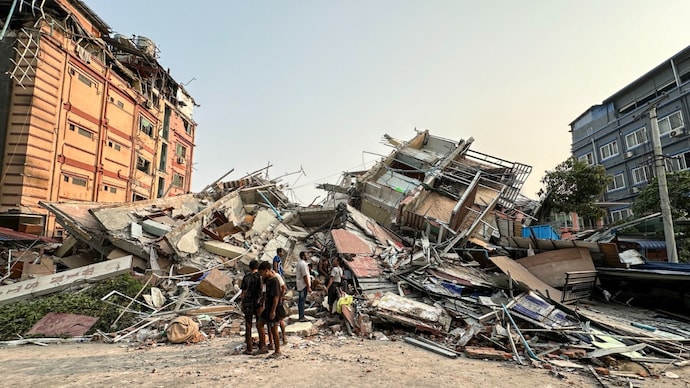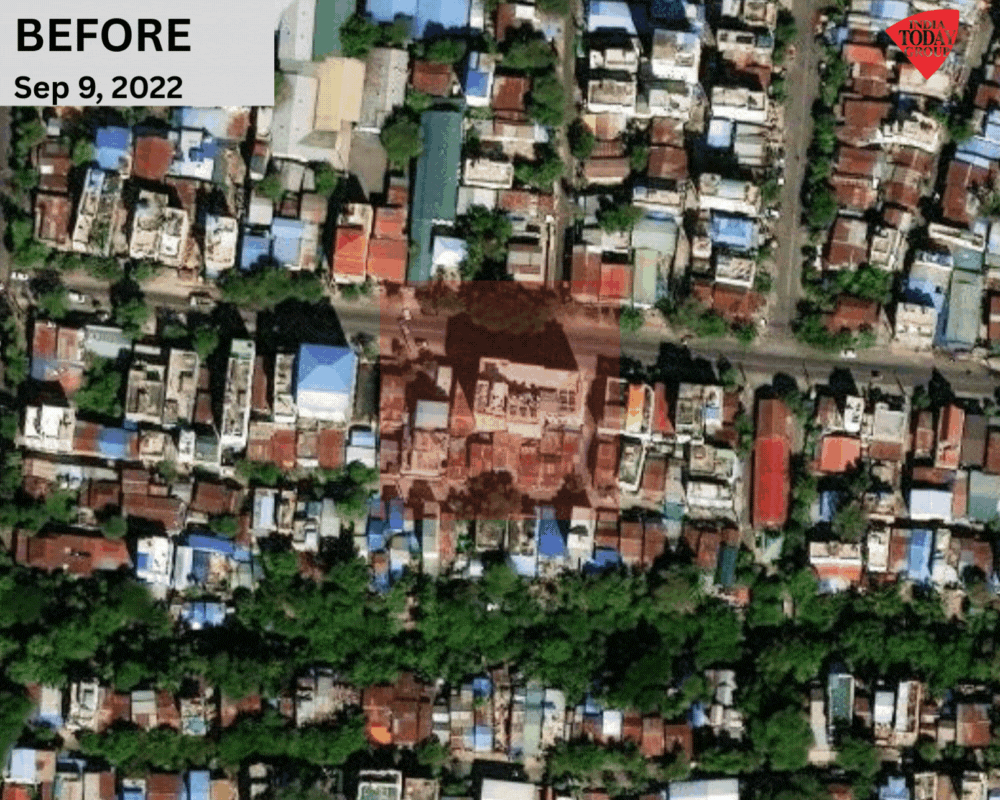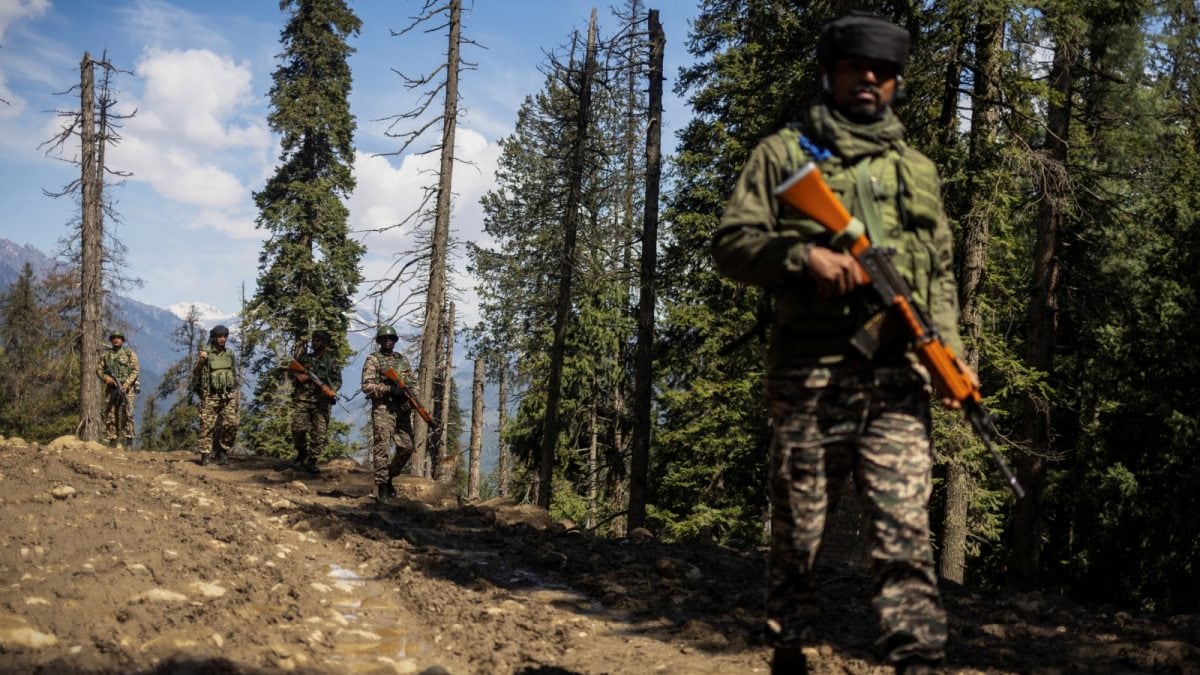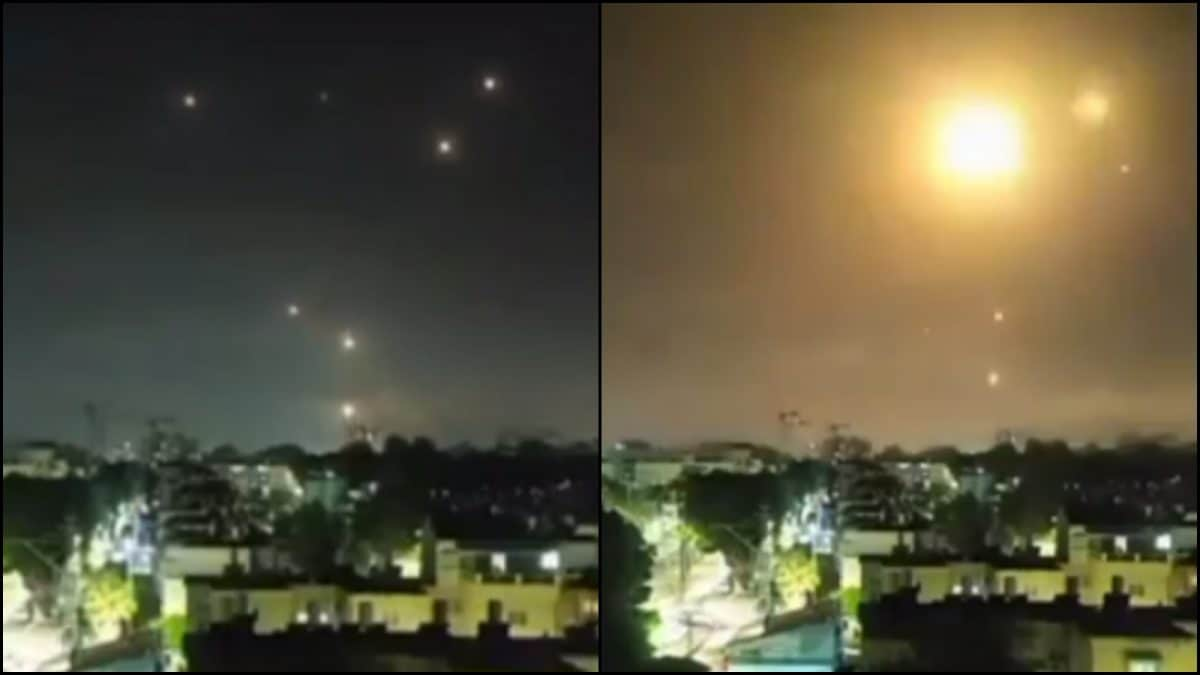Over 2,000 damaged structures identified in quake-hit Mandalay city, Myanmar, based on Microsoft's AI-powered damage assessment tool.

People stand past the debris of a collapsed building in Mandalay after an earthquake. (AFP photo)
Eight nations, including India, stepped in to provide relief on the quake-hit land of Myanmar—but this time, help also came from space. Just three days after the major earthquake that caused more than 2000 deaths, Microsoft deployed a space-powered response, using satellite imagery and artificial intelligence to detect collapsed buildings.
The goal was clear: use technology to guide help where it’s needed most. On Saturday, San Francisco-based Planet Labs PBC captured fresh satellite images of the quake-hit zones after the clouds cleared. These were sent to Microsoft’s philanthropic AI for Good lab, where artificial intelligence analysed the damage—spotting collapsed and severely damaged buildings.
Before recent technological advancements, assessing damage after disasters like earthquakes and floods relied heavily on ground analysis. The method was slow, often taking days or weeks. While this gave detailed data, it couldn’t keep up with the urgent need for quick action.
The analysis showed 515 buildings in worst-hit Mandalay with 80% to 100% damage, and another 1,524 with damage ranging from 20% to 80%. Other severely affected areas included Yangon and Min Kun, both with a dense concentration of collapsed structures.
Based on remote-sensing data from Planet Labs PBC, Microsoft’s AI for Good lab processed and visualised damage across more than 1.81 lakh buildings in Mandalay, Myanmar.


As per state media reports, much of the devastation caused by Friday’s quake appeared to be in the ancient capital of Mandalay, near the epicenter in the Sagaing region.
This isn’t the first time Microsoft’s AI for Good lab has provided AI-assisted damage assessment. In 2023, it tracked catastrophic flooding in Libya to anticipate risks and support recovery efforts, analysed the massive earthquake in Turkey in March, and evaluated over 2,810 burnt buildings from the Maui wildfires in August.
Relief efforts have been slow, hampered by power outages, fuel shortages, and unreliable communication. The absence of modern machinery has delayed search-and-rescue operations, with many forced to dig for survivors by hand in temperatures above 40 degrees Celsius.
Some areas have been cut off by landslides, further hindering efforts to assess the damage. Ongoing civil war in the country has also complicated rescue operations.
Microsoft’s paper on post-disaster damage assessment reveals how AI is now reading destruction from high-res satellite images leveraging deep learning. This involves feeding before and after satellite images into a convolutional neural network (CNN)—a kind of supercomputer tailored for visual data processing.
The CNN is trained to recognise patterns and features associated with damage—such as altered roof structures, debris, broken walls, etc.—by comparing the two sets of images. The model uses a scoring system to quantify damage severity and further classify images into categories like “no damage”, “minor damage”, “partially destroyed”, and “destroyed”.
The report mentions, “Due to the emergency nature of disaster response efforts, the value of automating damage assessment lies primarily in the inference speed, rather than accuracy.”
Myanmar’s location between two tectonic plates – the India and Eurasia plates – places it at particular risk of earthquakes. The boundary between the two plates is called the Saigang Fault. Experts describe it as a long, straight line running approximately 1,200km (745 miles) from north to south through cities such as Mandalay and Yangon, placing millions of people at risk.
According to the USGS, the Myanmar earthquake occurred because the India and Eurasia plates were rubbing sideways against each other, a motion described as “strike-slip faulting”. The USGS estimates that nearly 800,000 people in Myanmar may have been within the zone of the most violent shaking, with the death toll expected to rise sharply over the coming days.
Published On:
Apr 1, 2025
Tune In

 1 month ago
1 month ago


















